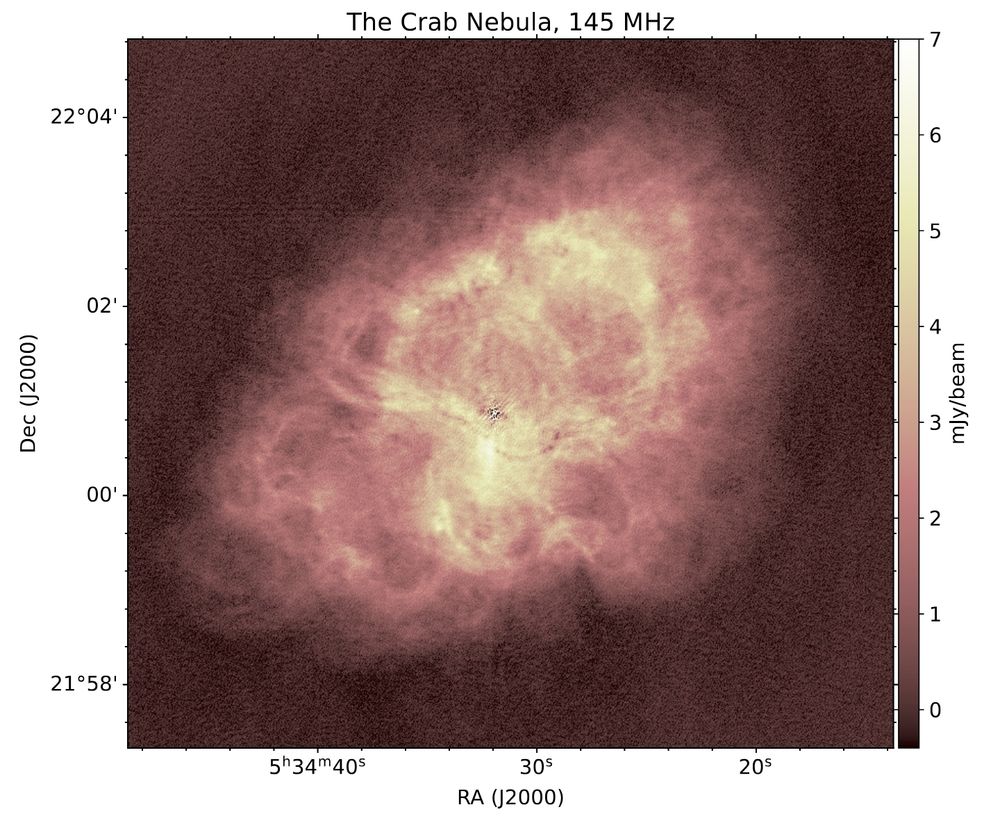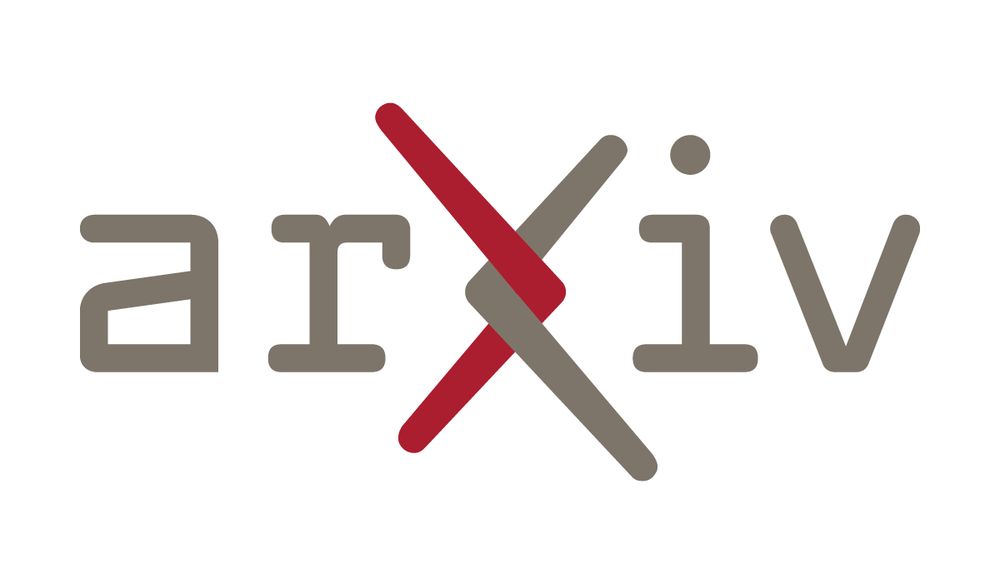
Check for the wonderful science that @axisprobe.bsky.social would enable in the white book uploaded today in arXiv: arxiv.org/abs/2511.00253
I've participated with a chapter on "X-ray and radio surface brightness edges in the ICM", you can find it in the Galaxies GO Science section (page 69)
04.11.2025 08:47 — 👍 0 🔁 0 💬 0 📌 0

Color rendering of the dark matter particle distribution from a N-body simulation of a LCDM model. Dark matter halos are visible as clumps of different sizes. The color coding follows the mass of the halos, with large halos appearing redder and small halos appearing bluer. The characteristic filamentary structure of the Cosmic Web is striking. Simulation credit: RAMSES. Image credit: S. Colombi.
in the #arXiv
Numerical Cosmology
by Romain Teyssier
arxiv.org/abs/2510.13129 🧪 #Cosmology
16.10.2025 09:19 — 👍 55 🔁 19 💬 1 📌 1
I also had two papers come out this month! I worked on the first XRISM results from the Perseus cluster and got time on XRISM to observe A1914, which we discovered was undergoing a line-of-sight merger! 🔭
25.09.2025 23:31 — 👍 16 🔁 5 💬 1 📌 0
To conclude, this work adds to the growing effort to investigate nonthermal phenomena outside the denser and well-studied regions of the ICM. Future instruments like @SKAO will likely probe these regions more efficiently. Paper submitted 7/7
19.09.2025 15:39 — 👍 0 🔁 0 💬 0 📌 0
What about the uGMRT non-detection? Since diffuse sources in cluster pairs are rare, even spectral limits would help to understand the mechanisms generating the emission. However, the MeerKAT emission is unfortunately too faint to provide a meaningful limit with the uGMRT... 6/7
19.09.2025 03:56 — 👍 1 🔁 0 💬 1 📌 0
We compared this extended emission with radio bridges and halos. While its classification is uncertain, its properties align with that expected for a diffuse emission generated in an early stage of the merger 5/7
19.09.2025 03:56 — 👍 1 🔁 0 💬 1 📌 0


The radio emission nicely follows the elongation of the X-ray emission from the clusters and intra-cluster bridge, suggesting that it is likely generated as consequence of the cluster-cluster encounter. In-between the clusters, the radio emission is enhanced 4/7
19.09.2025 03:56 — 👍 2 🔁 0 💬 1 📌 0


After careful analysis and removal of discrete sources, we confirmed the presence of the extended emission. The large-FoV images show that diffuse emission is present only at the position of the cluster pair in the MeerKAT field, while we have a non-detection with the uGMRT 3/7
19.09.2025 03:56 — 👍 2 🔁 0 💬 1 📌 0

The clusters are interacting and are likely observed shortly after pericenter passage. From the MeerKAT images, we noticed "excess" diffuse emission in the intra-cluster region 2/7
19.09.2025 03:56 — 👍 2 🔁 0 💬 1 📌 0

New paper alert! We studied a galaxy cluster pair with @SKA_Africa MeerKAT UHF and @NCRA_Outreach uGMRT band 3 data and found diffuse emission between the two clusters! 1/7
arxiv.org/abs/2509.14348
19.09.2025 03:56 — 👍 5 🔁 1 💬 1 📌 0
Aaand the paper has been accepted! The accepted version of the paper was posted on arXiv on Aug 19: arxiv.org/abs/2505.05415
03.09.2025 13:48 — 👍 4 🔁 0 💬 0 📌 0


Where is the counter lobe? An interesting hypothesis is that it could have been stretched as a consequence of the sloshing in the system, resulting in what is now observed as bridge/arc. See also our recent MeerKAT paper on Ophiuchus (arxiv.org/abs/2504.16158)!
29.08.2025 07:19 — 👍 2 🔁 0 💬 0 📌 0

Low frequency observations of the Ophiuchus cluster, by Giacintucci+
The giant fossil lobe is studied in detail. The new data show steep spectrum filamentary structures embedded in the lobe. The lobe extends up to 820 kpc from the cluster center
arxiv.org/abs/2508.20190
29.08.2025 07:19 — 👍 6 🔁 2 💬 1 📌 0

.@XRISM_jp obs of the Ophiuchus cluster, by Fujita+
A low velocity dispersion is measured in the inner and outer regions (115 km/s at <25kpc, 186 km/s at 25-50 kpc). The same goes for the bulk velocity (8 km/s vs 104 km/s): is the sloshing at its minimum?
arxiv.org/abs/2507.00126
02.07.2025 06:45 — 👍 0 🔁 0 💬 0 📌 0
(w/ @cjriseley.bsky.social, @annalisa-astro.bsky.social, @CStuardi, @FraLoi1)
02.07.2025 06:36 — 👍 0 🔁 0 💬 0 📌 0

The magnetic field in A2142, by Pagliotta+
A rotation measure and polarization study is performed with MeerKAT. The magnetic field profile of the ICM is drawn, indicating a central field strength of 9.5 muG at the cluster center.
arxiv.org/abs/2507.00114
02.07.2025 06:36 — 👍 2 🔁 0 💬 1 📌 0

MeerKAT observations of CHEX-MATE clusters, by Balboni+ (w/ @annalisa-astro.bsky.social, myself++)
A sample of 21 massive clusters is studied. Diffuse radio emission is detected in all systems (new halos and relics!)
arxiv.org/abs/2507.00133
02.07.2025 06:33 — 👍 1 🔁 0 💬 0 📌 0

Happy to have been a coauthor on this paper led by Maria Arias and @rtimmerman.bsky.social looking at the crab nebula with the full International #LOFAR Telescope that was put on arxiv yesterday! Lots of nice sub-arcsecond detail is revealed. Go check out the paper on arxiv arxiv.org/abs/2506.19460
26.06.2025 10:08 — 👍 8 🔁 3 💬 0 📌 0


The central region of A3667 in hard X-rays, by @MSMirakhor+@astroswalker
A @NASANuSTAR observation of the cluster is presented. The spectrum is better described by a 2T thermal model. An updated limit of B > 0.2 muG is provided from the lack of IC emission
arxiv.org/abs/2505.20453
28.05.2025 06:12 — 👍 2 🔁 0 💬 0 📌 0


Thin filaments in the tails of A2255, by DeRubeis+ (w/ myself, @jurjen93.bsky.social+)
A2255 is known to be a "mess" (arxiv.org/abs/2006.04808). The new @LOFAR-VLBI images add further complexity in the system, this time revealing small-scale structures in its radio galaxies
arxiv.org/abs/2505.13595
21.05.2025 06:17 — 👍 14 🔁 3 💬 1 📌 0

The cascade of kinetic and magnetic energy from large to small scales in galactic-style turbulence behaves significantly different to the theoretical models that we regularly assume work.
www.nature.com/articles/s41...
Published in @natastron.nature.com
13.05.2025 15:11 — 👍 7 🔁 2 💬 0 📌 2
Our work is based on @LOFAR, MeerKAT @SKA_Africa, and uGMRT @NCRA_Outreach observations. Submitted to AAS journals
09.05.2025 06:54 — 👍 0 🔁 0 💬 0 📌 0
To summarize, the studied halos with LLS > 2 Mpc have properties in common with that of classical radio halos. Sensitive observations at high-frequency are also able to detect the peripheral emission and are crucial to remove the contamination of discrete sources
4/4
09.05.2025 06:54 — 👍 0 🔁 0 💬 1 📌 0


We pointed out how a second "outer component" of the halo surface brightness profile can arise when an improper source subtraction/masking is performed. Also the sector choice is critical, as different geometries, directions, and centers can generate the second component
3/4
09.05.2025 06:54 — 👍 0 🔁 0 💬 1 📌 0


These halos follow a single exponential profile in surface brightness, despite their large extents and complex dynamical state, and have emissivities similar to those of the other halos known. These massive clusters were good candidates to hosts the so-called mega halos
2/4
09.05.2025 06:54 — 👍 0 🔁 0 💬 1 📌 0


Radial properties of radio halos, by Rajpurohit+ (w/ myself+)
New radio halos with LLS>2 Mpc are reported, even at high-frequency. We measured the surface brightness and spectral properties of the emission, obtaining important results (more below)
arxiv.org/abs/2505.05415
1/4
09.05.2025 06:54 — 👍 0 🔁 0 💬 1 📌 1
Astronomy PhD. candidate at UChicago.
X-raying galaxies since 2021
she/her
Astrophysics professor at the University of the Witwatersrand, Johannesburg
Astronomy & Astrophysics is an international journal publishing papers on the latest findings from the astronomy and astrophysics community
https://www.aanda.org/
Astronomer, driving The Dish📡 to study pulsars in my PhD. Also, founded SpaceAustralia.com. Also, love a bit of astrophotography. Also, do everything with my little mate, Max. Also, Ultra-Gay. He/Him.
Oort fellow at Leiden Observatory. Working on X-ray galaxy clusters and observational cosmology. Dad and husband.
The online news outlet of Inaf, the Italian National Institute for Astrophysics. Keep up to date with everything happening in our universe at https://www.media.inaf.it/
Graduate Student @ Kapteyn Astronomical Institute || Radio astronomer || Experimental 21cm cosmologist
Under new management
Submit entry by tagging @PlotAstro.bsky.social
Postdoctoral fellow at Center for Astrophysics | Harvard & Smithsonian | Space Art | Galaxy evolution | Mental health | Australian, disabled cat parent.
Instagram: @Fashionableastronomy
Astrophysicist • Dark Matter
moritzfischer.world
darkium.org
Everything about Linux🐧, DevOps, Networking, Automation, sysadmin🐱💻 & beginner tips💡Newsletter → sysxplore.substack.com
The free and flexible app for your private thoughts. For help and deeper discussions, join our community: http://obsidian.md/community
📡 Astrophysicist 📈 Data Person
🎨 Hobby SciArt Illustrator & Writer
Research Fellow in Astrophysics @ the University of Leeds. Interested in all things Radio Astronomy! Currently working on Galactic filaments. Owned by a dog, two cats, and two guinea pigs. 🐶🐱🐹 Will post both science and personal. She/her
(she/her)
Assistant Scientist at the #NRAO.
Commissioning the #ALMA 2030 Wideband Sensitivity Upgrade 📡
Using Radio Recombination Line observations to learn about how galaxies and their interstellar media evolve! ✨
Dad, Professor of Astronomy at the University of Louisville. He/Him/hey you. Opinions are my own. As are the typos.
Astronomy, datascience, ethics & occasional US/EU politics.
PostDoc | astrophysics | simulations | galaxy clusters | cosmic rays
Astronomers at Tsinghua University; love galaxies; learning how to build a 6.5m telescope now






























